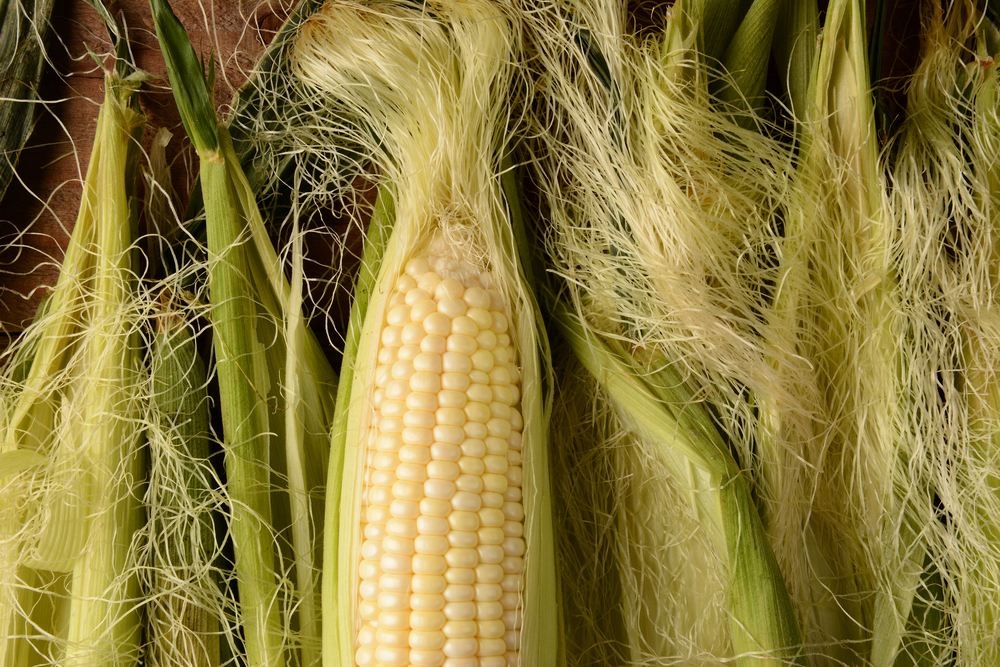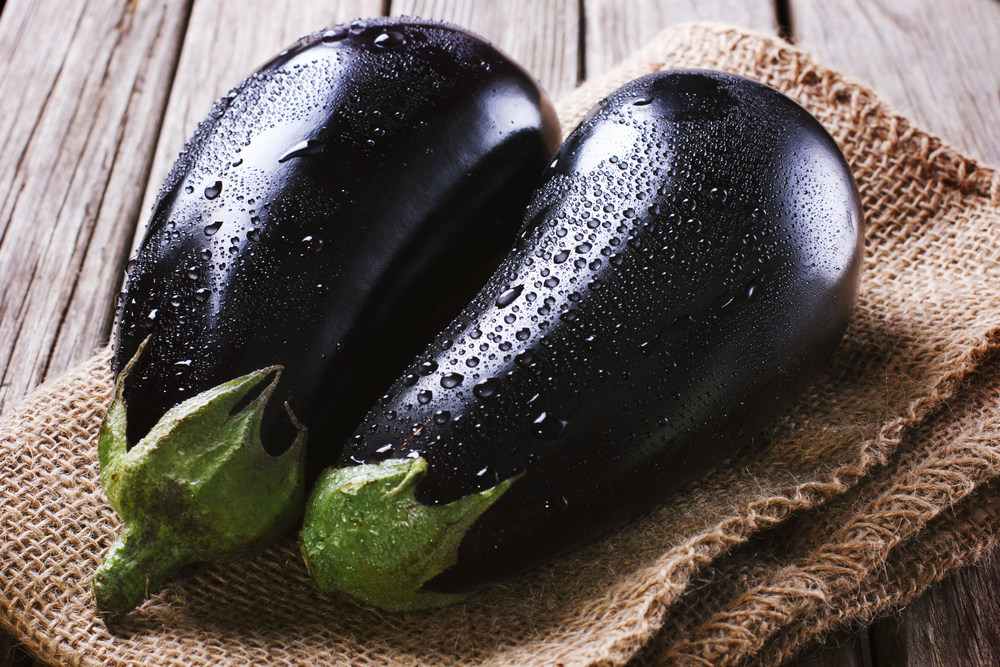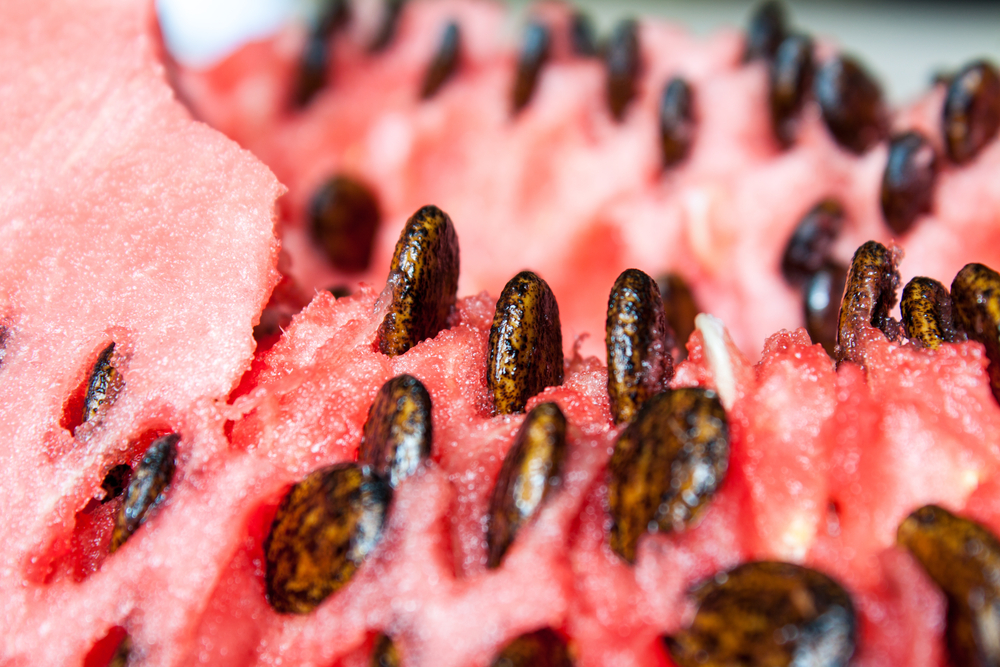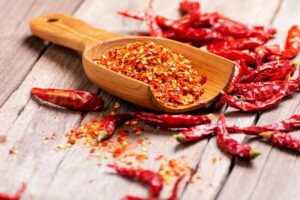You may not think twice before discarding the seeds from squash or the peel of an eggplant, but it’s time you should. There are lots of nutrients in those leftovers, as well as many cool new ideas for trying them out in your kitchen.
Eating more vegetables and limiting food waste is good for you and your wallet. And let’s not forget about the positive impact this has on our environment. While switching to a plant-only diet may not be possible for all of us, eating more plants may be the next best thing. Think of the skin, seeds, leaves, peel, or woody stems of vegetables and fruits.
We’ve talked to a few dietitians, and they helped us create this list of nutrition hacks that can make up a huge difference nutritionally and environmentally.
Without further ado, let’s get started!

Corn silk
Transform into: Corn silk crunchies
Here’s our first nutrition hack! You know corn silk as the long, flaxen plant strands that grow beneath the husk of fresh corn. But do you want to know something unexpected? According to a study published in Biomedicine & Pharmacotherapy, corn silk has many antioxidants and may be useful in lowering oxidative stress. This is especially amazing news for those who have type 2 diabetes.
Here’s an important thing though: while corn silk it’s most likely safe, you should avoid it if you are allergic to corn or on a treatment that affects your potassium levels.
Now, when it comes to preparing corn silk crunchies, don’t worry. This nutrition hack doesn’t include too much work. The first step would be to toss or compost any black silks. Next, put all remaining corn silk in a 200-degree Fahrenheit oven and let them dehydrate for a few hours. Once you do this, sauté the dried silks in olive oil or sunflower oil until crisp. Don’t forget to add salt and pepper.
Crumble crunchy corn silks and sprinkle them in Mexican dishes, chili, or onto salads.
Winter squash scraps
Transform into: Squash-flavored hummus
Got a whole pumpkin or butternut squash? You can use the flesh, seeds (even seed shells), pulp, and outer peel. The pulp of squash, like the flesh, is highly nutritious, providing lots of beta-carotene for eyes, skin, immunity, dietary fibers, and phenolic compounds that can reduce the risk of certain diseases.
This nutrition hack is excellent, especially for those who tend to get bored of the classic hummus recipe. The first thing you have to do to make squash-flavored hummus is to sauté the flesh in a tiny bit of olive or sunflower oil until it has caramelized and is cooked through. Blend with your favorite hummus and add a pinch of salt and cayenne.
You can serve this delicious hummus on sliced pita, in your favorite crudités salad, or in any hummus dippers you choose.
We have other nutrition hacks: if you’re cooking butternut squash or pumpkin soup, add some pulp to the broth, then blend the mix. You can even roast the seeds and sprinkle them on top of your soup or squash-flavored hummus.
Broccoli stems
Transform into: Broccoli coins
Trying to eat more fiber? This nutrition hack will provide you with lots of it! The first thing you have to do is to stop throwing away broccoli stems.
Not only are they packed with fibers, but a 3.5-ounce (100-gram) serving of raw broccoli stalk contains 71 micrograms of folate (that’s 18% of the Daily Value, also called DV), 93 milligrams of vitamin C (103% DV), and only 28 calories. Like broccoli leaves and florets, the stems are high in sulforaphane, an anti-cancer compound.
Again, this is another easy nutrition hack that doesn’t require spending too much time in the kitchen. Thinly slice broccoli stems to the width of a coin, then sauté them in a few drops of olive oil until fully cooked and lightly brown. Season with black pepper, thyme, and sage, and toss onto avocado toast, into a breakfast burrito, eggs, or a vegan scramble. For the more adventurous palate, try adding these broccoli coins to your oatmeal.
Keep reading to find other genius nutrition hacks!

Eggplant peel
Transform into: Marinara sauce with more
This is a nutrition hack some Italian mothers use: adding secret vegetables into a favorite dish, so the family gets more nutrients than they realize. Well, an eggplant is perfect for this recipe.
You may be wondering why eggplant instead of other vegetables. Here’s the answer: that deep purple peel is due to anthocyanins, which are naturally occurring pigments that may help lower the risk of chronic diseases.
According to a study published in Plants in 2021, the same peel offers potential anti-cancer, anti-diabetic, and anti-inflammatory properties. Interestingly, another study discovered that the peel may provide anti-Salmonella activity.
To make the eggplant marinara, preheat the oven to 400 degrees Fahrenheit and roast the whole eggplant for about 40 minutes. Then cut it in half and scoop out the flesh to use for other recipes (such as baba ghanoush). Don’t throw away the peel; instead, blend it with two cups of marinara sauce, and simmer the mix with a sprinkling of olive oil, red wine vinegar, and salt.
You can use this nutrition hack every time you fancy a different marinara sauce for your favorite pasta or pizza, and you can even have it over lunchtime with scrambled eggs.
Pro tip: Consider buying organic eggplant to limit the intake of pesticide residues.
Pineapple core
Transform into: Pineapple shreds
Pineapple has numerous health benefits. For starters, pineapple may function as a cardioprotective agent and is high in fiber, which may boost digestion. Plus, bromelain, a bioactive enzyme found in pineapple — including the core — may have anti-microbial and anti-cancer properties, among others.
You may not have been in the know, but the pineapple core is actually edible. But that’s not all: compared with the pineapple’s flesh, its firmness makes cooking easier. The core of the pineapple can provide extra flavor to pizza, oatmeal, a savory salad, or stir-fry.
But let’s see how this wild nutrition hack works. To make pineapple shreds, grate the raw core using a kitchen grater and that’s it! Keep the purée in the fridge until ready to use. For those who prefer a smoky flavor, grill your pineapple core before grating it.

Watermelon seeds
Transform into: Spiced, roasted seeds
Our next nutrition hack is meant to convince you that those little buggers can actually become enjoyable once you find out what they can do for your health. For instance, a one-ounce portion of watermelon seeds contains 2 milligrams of iron (11% DV), 3 milligrams of zinc (27% DV), as well as healthy fats, and 8 grams of plant protein (16% DV).
If you need more convincing to eat these seeds, research shows that they provide a great amount of arginine, which is an amino acid that may boost heart health and stamina in men.
For this nutrition hack, you have to wash and dry the seeds (choose only the black ones), and lightly toss them with sea salt and oil. Roast for 20 minutes at 325 degrees Fahrenheit, then add spices and herbs. Munch as a snack or sprinkle onto the salad.
Celery leaves
Transform into: Superfood sauces
You probably already know that celery has multiple health benefits, but it turns out that its leaves are also noteworthy. According to a 2021 study published in Bioinformation, celery leaves are a great source of antioxidants. On top of that, another study found that these leaves may be useful in the prevention and treatment of inflammatory diseases.
This last nutrition hack will give you a delicious celery leaf sauce. Mince celery leaves and — in a 1:1 ratio — stir in the mustard, mayo, pesto, salsa, ketchup, or guacamole. Serve like your usual sauces.
Do you experience bloating, cramping, or constipation? Here are 10 Superfoods That Boost Digestion!







